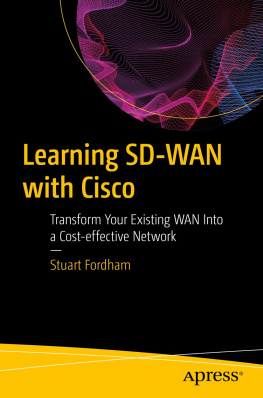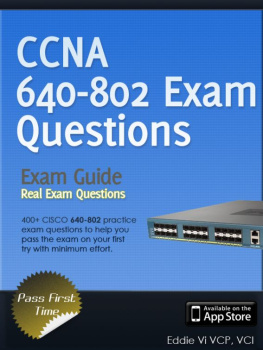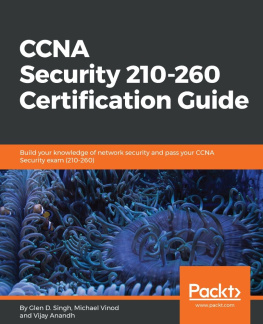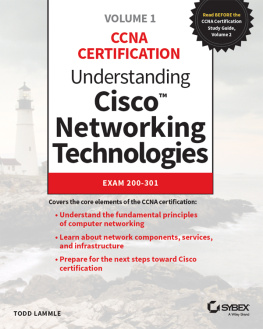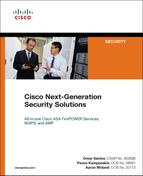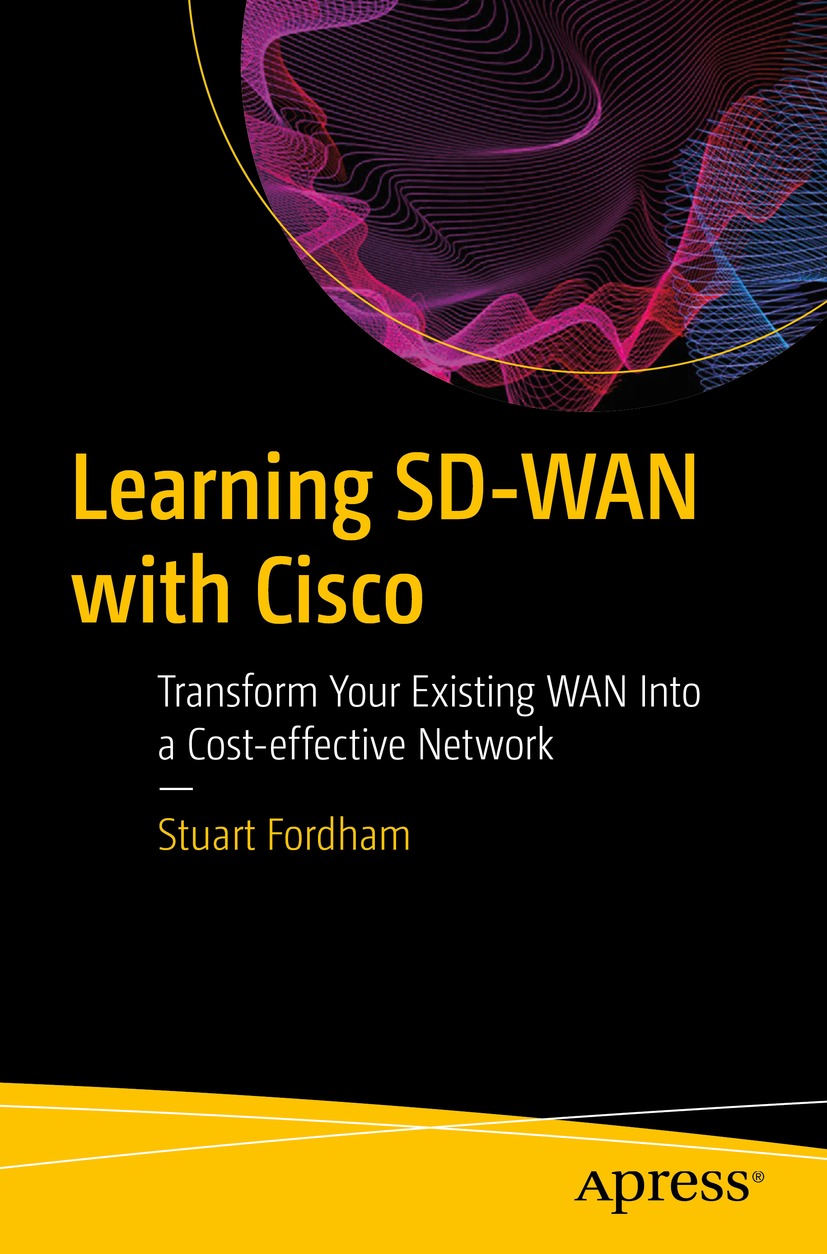Stuart Fordham - Learning SD-WAN with Cisco: Transform Your Existing WAN Into a Cost-effective Network
Here you can read online Stuart Fordham - Learning SD-WAN with Cisco: Transform Your Existing WAN Into a Cost-effective Network full text of the book (entire story) in english for free. Download pdf and epub, get meaning, cover and reviews about this ebook. year: 2021, publisher: Apress, genre: Home and family. Description of the work, (preface) as well as reviews are available. Best literature library LitArk.com created for fans of good reading and offers a wide selection of genres:
Romance novel
Science fiction
Adventure
Detective
Science
History
Home and family
Prose
Art
Politics
Computer
Non-fiction
Religion
Business
Children
Humor
Choose a favorite category and find really read worthwhile books. Enjoy immersion in the world of imagination, feel the emotions of the characters or learn something new for yourself, make an fascinating discovery.
- Book:Learning SD-WAN with Cisco: Transform Your Existing WAN Into a Cost-effective Network
- Author:
- Publisher:Apress
- Genre:
- Year:2021
- Rating:3 / 5
- Favourites:Add to favourites
- Your mark:
Learning SD-WAN with Cisco: Transform Your Existing WAN Into a Cost-effective Network: summary, description and annotation
We offer to read an annotation, description, summary or preface (depends on what the author of the book "Learning SD-WAN with Cisco: Transform Your Existing WAN Into a Cost-effective Network" wrote himself). If you haven't found the necessary information about the book — write in the comments, we will try to find it.
Explore the rise of SD-WAN with CISCO and transform your existing WAN into an agile, efficient, and cost-effective network.
Learning SD-WAN with Cisco helps you understand the development of SD-WAN and its benefits to modern networks. This book starts with an exploration of the different components of SD-WAN, such as vBond for orchestration, vManage for management, vSmart for control, and the vEdge devices. From there, it moves on to building a network from the ground up using EVE-NG, focusing on how to install EVE-NG, get the required licenses via a SmartNET account, download the components, and begin to create your network by installing vManage.
Once you have this foundation, you will create the organization and certificates, and look at local users as well as single- and multi-tenancy options and clustering. As you continue to build your network, you will dig down into the overlay protocols used in SD-WAN, and then deploy your controllers and edge devices, looking at zero-touch provisioning along the way.
After building your network, you will configure and apply policies and templates to manage the control and data planes as well as VPNs, Internet access, security, and quality of service. The book also explores reporting and management using vManage, along with upgrading and troubleshooting the various components, using techniques from simple ping and trace route through to advanced techniques such as DTLS and TLOC troubleshooting and traffic simulation.
After reading this book, you will have hands-on experience working with SD-WAN. You will understand how to deploy, configure, manage, and troubleshoot it.
What You Will Learn
- Know what SD-WAN is, how it came about, and why we need it
- Understand troubleshooting and traffic simulation of DTLS and TLOC
- Monitor, report, and troubleshoot the SD-WAN environment
Who This Book Is For
Network professionals with experience in Linux and Cisco devicesStuart Fordham: author's other books
Who wrote Learning SD-WAN with Cisco: Transform Your Existing WAN Into a Cost-effective Network? Find out the surname, the name of the author of the book and a list of all author's works by series.

